During my research for Riflemen, and my current project on the battles of Arroyomolinos and Almaraz, I have become pretty familiar with the War Office records for the period at The National Archives at Kew. I have found some fascinating stories within those records (see other my other blogs) and thought I would share an outline of what records exist and the type of information they contain. Hopefully if you are researching an ancestor, individual soldier, or unit, you will find it useful. I do not pretend it is a comprehensive list of all the records available at Kew for soldiers of the period, but it should act as a good starting point, and if you know of any type of records I have omitted please leave a comment on the blog.
The War Office (WO) records are arranged in series, for example WO 1, WO 2, etc. Within those series are sub-series – WO 1/2 etc. Sometimes you will find that the records you are looking for are missing. It may be that the paperwork never arrived back from the West Indies, for example, or it may be that the record has been lost or destroyed in the intervening 200 years. I have not had reason to look for Royal Artillery or Royal Engineer records so most of what follows pertains only to the infantry, cavalry, militia, etc. I have provided links to the WO series mentioned in the text, just click on them to go to the entry in The National Archives catalog. Some records have been digitised and are available online, but many are only available at Kew.
Ins & Outs
The two points where the most information is often recorded about an individual soldier is when they joined the army, and then when they left. The WO25 Description and Succession Books series contain the recruitment records for each regiment. Each book spans a certain date range, so if you know the regiment and the year the soldier joined you should be able to find them. The records have mostly been microfilmed and digitised, so are available for free download. For each soldier the name, height and age at enlistment are recorded, along with a basic description; complexion, eye colour, hair colour and shape of their face or any distinguishing marks. Date and place of birth, and occupation are also listed, along with where they signed up, for what period of service and who enlisted them. Any previous service is also mentioned. The soldier’s subsequent promotions are then recorded, along with how and when they left the regiment; deserted, discharged, transferred or deceased. You will find that the quality of record keeping does vary and not all the information is filled in for every soldier.
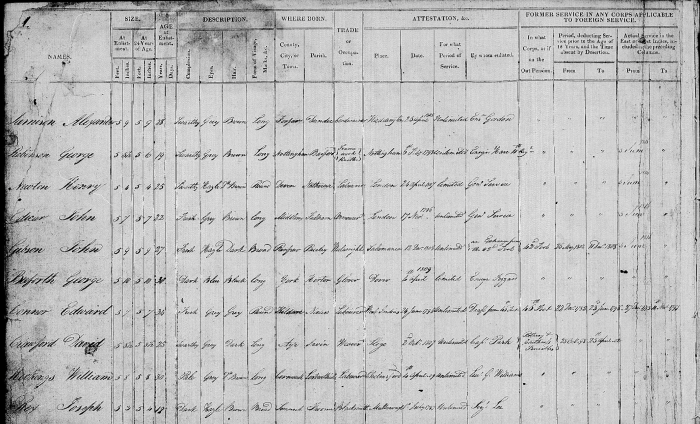
Records of the end of a soldier’s career, if he survived his service, were kept by Royal Chelsea Hospital and its Irish equivalent, the Royal Kilmainham Hospital, which administered army pensions. Discharge documents can be found in WO 97, WO 119, WO 121, and WO 122. The records can be searched by the soldier’s name, but do try some variation of spelling if you don’t find them straightaway. You can also search by regiment. The discharge certificates have largely been digitised but may only be available from a third-party website, but for free if you are actually on-site at Kew.
The certificates record where and when a soldier was born, where and when they enlisted, their service, the reason for discharge, a comment on their conduct and a basic physical description. You may also find a soldier mentioned in the various admission books and registers of the hospitals: WO 23, WO 116, WO 118 and WO 120.
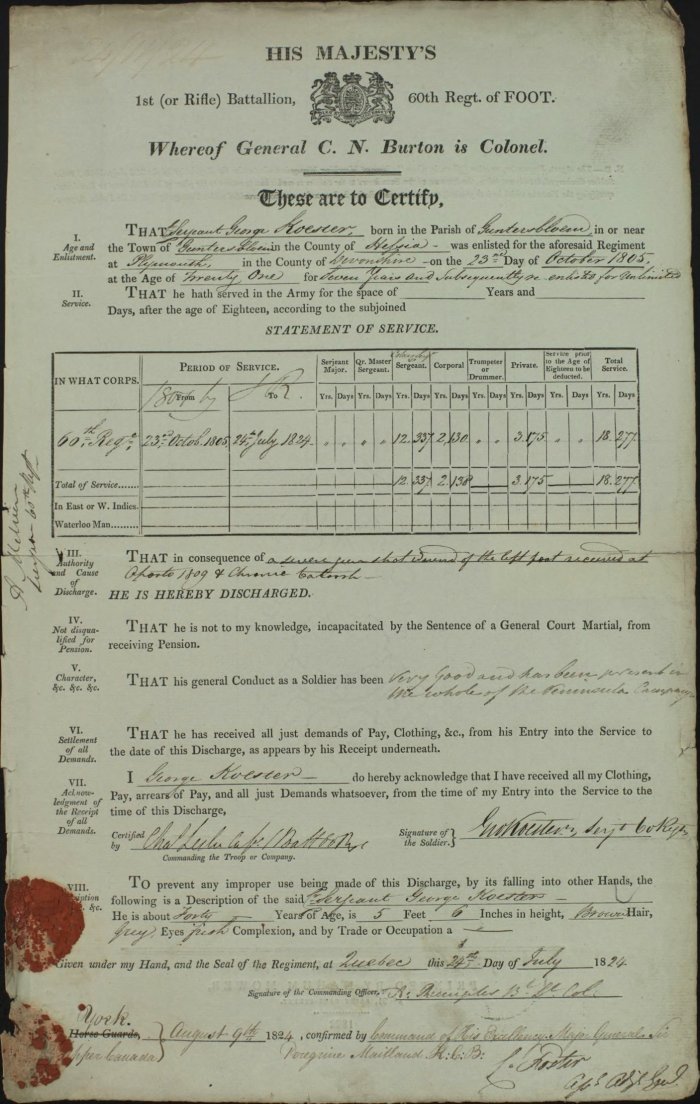
Officers
There are often fewer records at Kew relating to individual officers than there are for individual ordinary soldiers. A good starting point are the Army Lists in WO 65. Officers are listed by regiment and you can track their promotions through the years, and the handwritten notes in the margins also tell you if they exchange into a different regiment. The books have been digitised and can be downloaded. Most promotions were not paid for but achieved through seniority or favour. Officers wrote requesting promotion in what was termed a ‘memorial’. These are somewhere between begging letters and CVs, and can provide lots of interesting information. However, you do need to know the date of a promotion to find the relevant letter. They are stored loose in boxes, by date, under WO 31 – Memoranda of appointments, promotions and resignations.
Returns of officers’ service who survived the wars are filed by name under WO 25, and can also be downloaded. They contain details of their career such as promotions, whether they were by purchase, when they went on half-pay (i.e. retired) and details of any marriages.

Regimental Records
The most useful regimental records for tracking individuals are the Muster Books and Pay Lists in WO 12. The books contain monthly or quarterly records of pay for the regiments, and the comments section can add good biographical details such as promotions, reductions, or time in hospital. Soldiers are sometimes listed as being on guard duty when the pay parade was held or on command, meaning they were on detached duty.
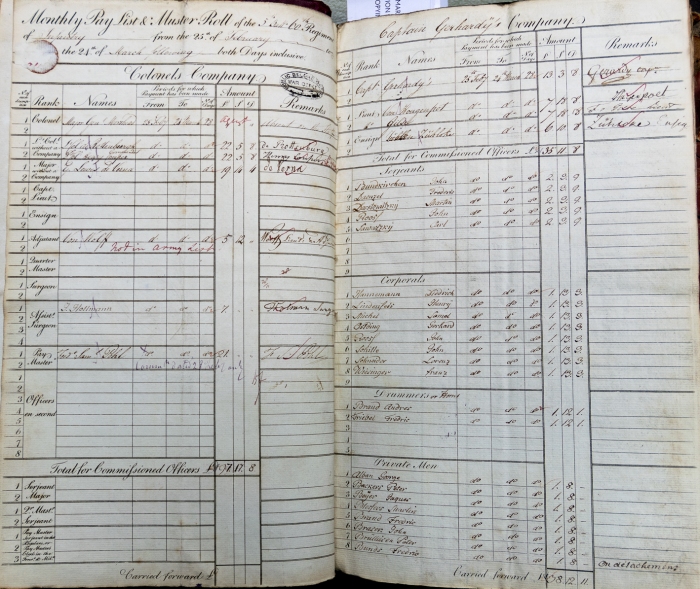
The monthly regimental returns rarely mention ordinary soldiers by name but do contain good information on the officers, the number of men in the unit and details like the number of men sick or on detachment, and where they were. You can find the returns in WO 17, and then click on Cavalry, Foot Guards or Infantry etc to find the unit you want.
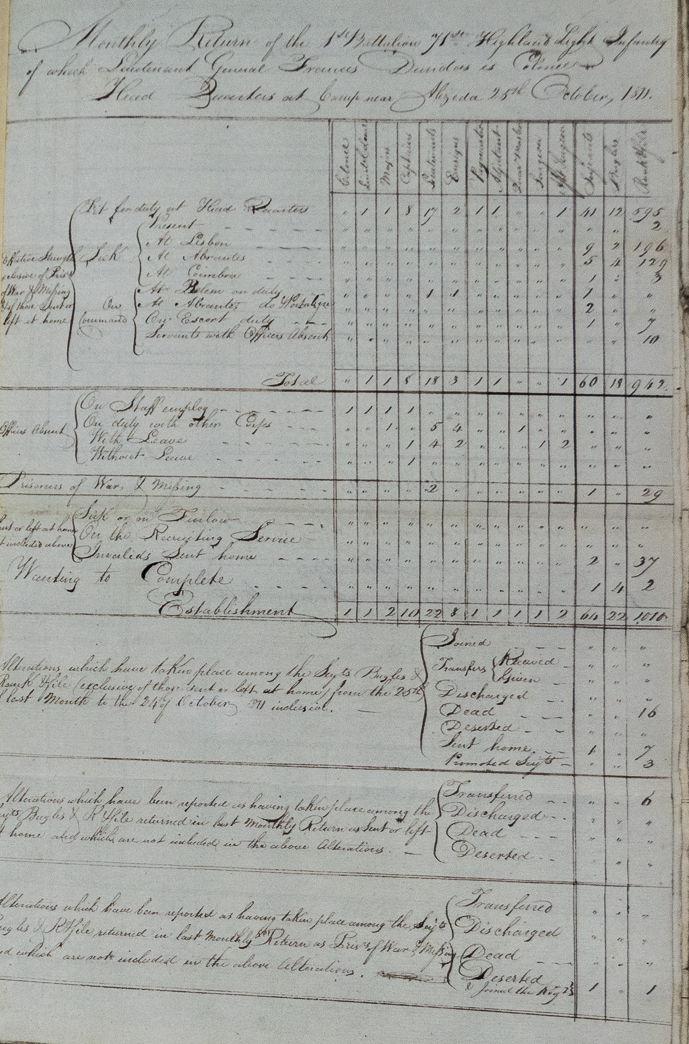
The casualty returns in WO 25 list soldiers who died, deserted, went missing, or were captured. They often provide the place of death, whether killed in action, died of wounds or just died of illness, and also place of birth and occupation. They also sometimes list to whom any outstanding pay or prize money was eventually given. Regiments were inspected regularly, but not all inspections have survived. Those that have can be found in WO 27. Until 1801 they are divided into regiments on the British or Irish establishments, then all regiments by year, and then by ranges of regiments and half years. The reports are bound in huge books and contain excellent information on the state of the units, including things like age and height ranges of the men. They also often list the regimental courts martial, including the name of the offender, the offence and the punishment.

General Courts Martial
Regimental courts martial tried soldiers for minor offences. Officers and soldiers charged with more serious offences were tried by general courts martial. The papers of regimental courts martial did not have to be submitted to the War Office but general courts martial did, and many of them have survived. You can find the registers of the trials under WO 90 and WO 91. Even if the person you are researching was not the accused in a trial they may have been a witness, and if you are researching a unit then a trial can give you great insight into its character, and provide some great stories. For Rfilemen I found a murder, desertions, duels, mess disputes, and accusations of cowardice. The trial papers are stored, often unopened since they were filed, and in boxes by date, in WO 71.
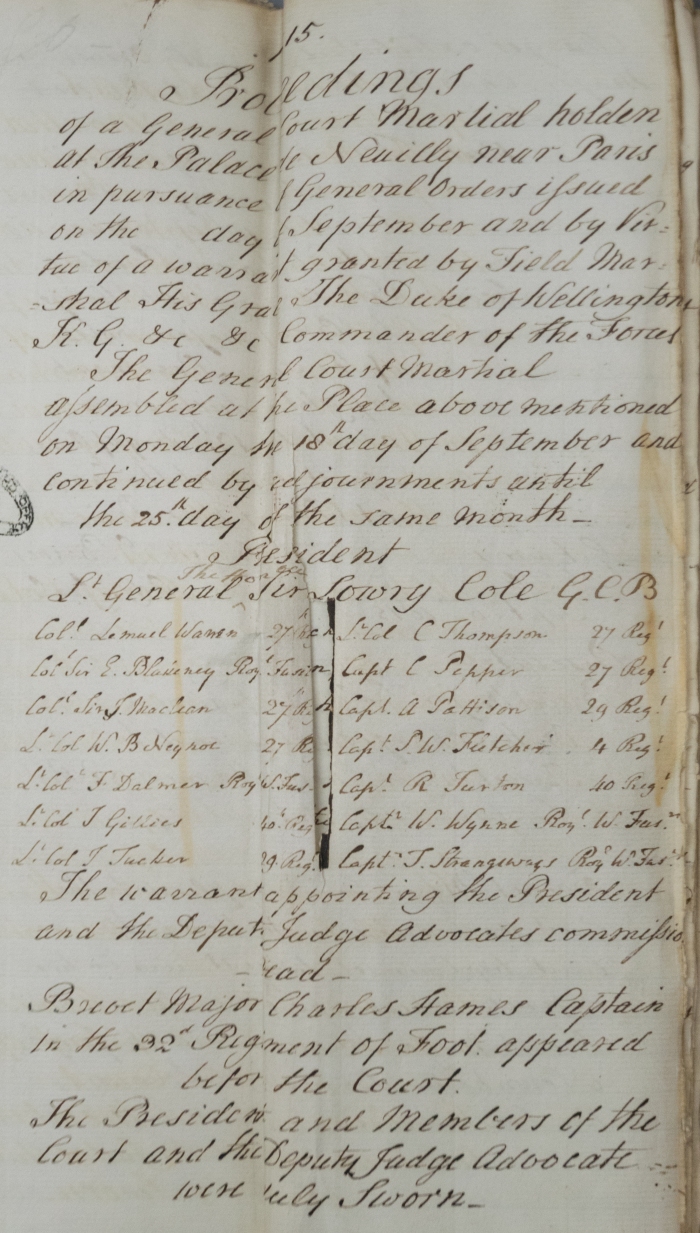
Medal Rolls
Lastly, the medal rolls for the Waterloo and the General Service Medal for the rest of the wars can be found at WO 100.
Hopefully that has provided a good introduction to the records at Kew for the period. You will often be frustrated that something appears to be missing, but then elated when you stumble across some fascinating record that does not appear to have been read for 200 years.
My history of the 5/60th – Riflemen is available now from Amazon.com, Amazon.co.uk and other book retailers, or direct from the publisher Helion & Co.
